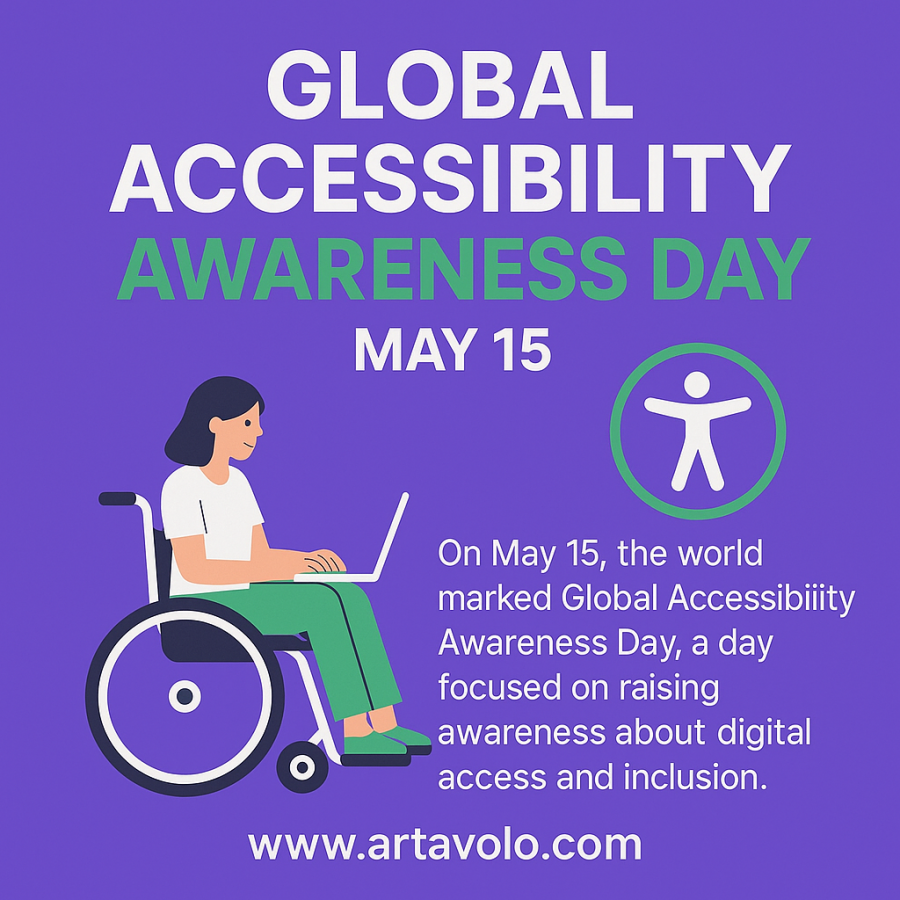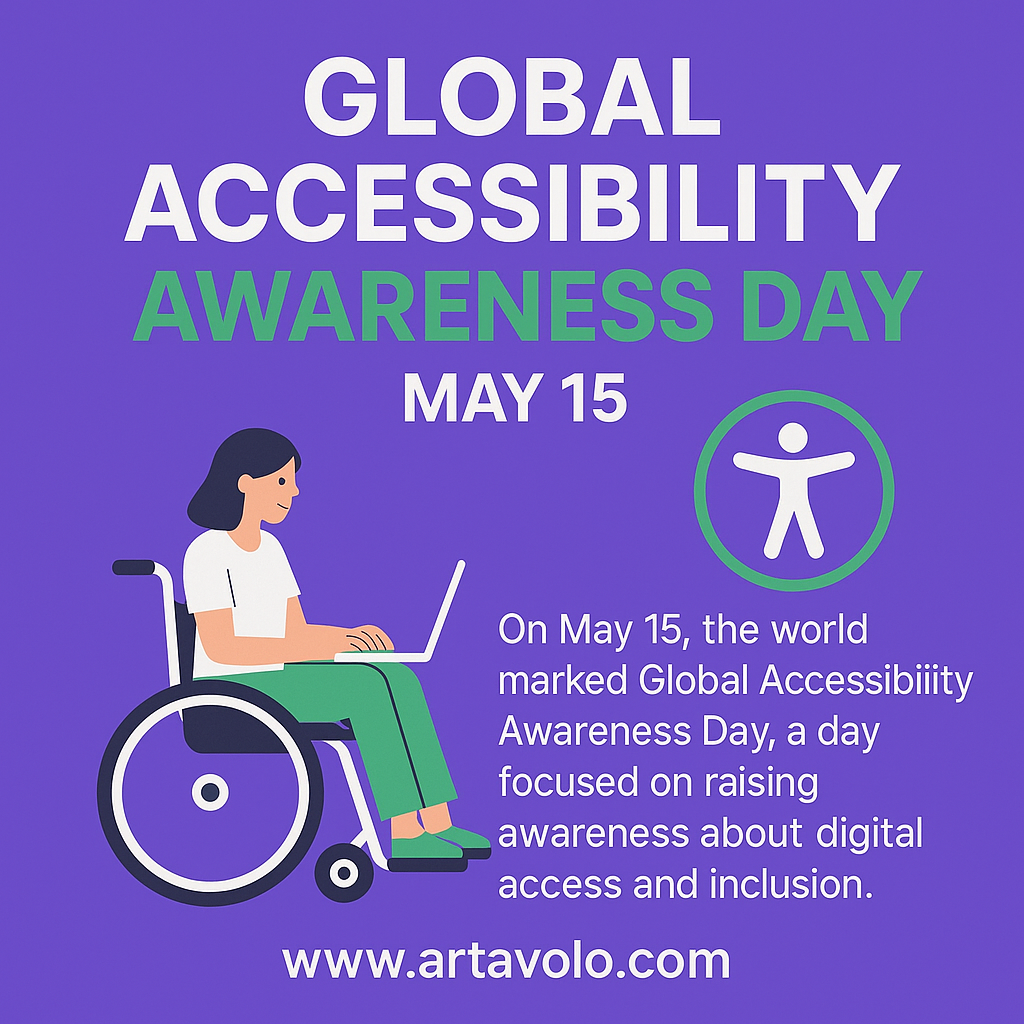On May 15, 2025, the world came together once again to mark Global Accessibility Awareness Day (GAAD)—a date recognized each year on the third Thursday of May. It’s more than a symbolic event. It’s a collective call to action, reminding technologists, educators, business leaders, and creators that digital accessibility isn’t a “nice-to-have”—it’s a responsibility.
In a world where digital tools govern how we work, learn, and interact, we can no longer afford to leave people behind. For over one billion individuals living with disabilities globally, the barriers of the physical world are compounded by a digital landscape that’s often not built with them in mind.
As the founder of Artavolo, a modern project management platform, I’d like to reflect on how accessibility shapes not just our product development—but our philosophy about inclusion, work, and design.
What Accessibility Really Means in a Digital World
Accessibility is often misunderstood as merely adding “support for screen readers” or offering an alternative text label on an image. In truth, it encompasses a far broader spectrum.
Digital accessibility means designing websites, apps, and interfaces in ways that can be understood, navigated, and used by people with a wide range of abilities—including those with visual, auditory, motor, and cognitive impairments.
This includes:
Ensuring keyboard navigability for those who can’t use a mouse
Designing for screen reader compatibility
Using high contrast color schemes and readable fonts
Avoiding flashing content that can trigger seizures
Providing clear structures and cues for users with neurodiverse thinking patterns
These features aren’t just useful to people with permanent disabilities. They also support aging populations, temporary injuries, situational impairments (like a noisy environment), and even users in low-bandwidth regions.
Artavolo: Building the Accessible Project Management Table
Artavolo was born out of a need to simplify and humanize project management. Our product name derives from the Italian word tavolo—table—a metaphor for a shared workspace where people gather, plan, create, and move forward together.
From the outset, we made a deliberate choice: everyone deserves a seat at that table.
Here’s how we’ve embedded accessibility into Artavolo’s DNA:
1. Inclusive Interface Design
Artavolo’s interface avoids unnecessary clutter, minimizes distractions, and uses high-contrast color palettes that meet or exceed WCAG 2.1 AA standards. Every element—from headers to form fields—is designed to be visible and readable across devices and visual abilities.
2. Keyboard Navigation and Shortcuts
Many users rely on keyboard-only workflows, whether due to physical impairments or personal preference. Artavolo offers full keyboard navigation across its Grid, Smart.Editor, and task interfaces, along with customizable keyboard shortcuts.
This makes it possible to add tasks, assign deadlines, navigate tables, or comment on content—all without touching a mouse.
3. Screen Reader Compatibility
We’ve implemented proper ARIA roles, labels, and live region updates to ensure that screen readers like NVDA, JAWS, and VoiceOver can accurately interpret our interface. From reading cell content to navigating the Smart.Editor, every interaction is designed to be understandable through audio.
4. Rich Text and Task Integration with Accessibility in Mind
One of Artavolo’s key innovations is the Smart.Editor, which combines rich text editing with embedded task creation. Users can assign, prioritize, and manage tasks inside any document or cell—while retaining accessibility features like semantic headings, list structures, and keyboard shortcuts.
This dual function empowers neurodivergent users—particularly those with ADHD or dyslexia—by combining structure and creativity in a single, accessible workflow.
5. Localization and Language Support
Artavolo is currently used in over 20 countries. We support multiple languages and right-to-left (RTL) interfaces. Localization is often overlooked in accessibility discussions, but offering native language support is a key step toward making tools inclusive.
6. Accessible Templates and Onboarding
For new users, we offer project templates with accessibility best practices built in. Our onboarding flow includes an accessible walkthrough with screen reader instructions and skip options, ensuring no one is left confused at the starting line.
Why Accessibility Makes Software Better—for Everyone
A growing body of research and case studies confirms what many accessibility advocates have long known: accessibility improves usability for all users.
Consider:
Closed captions help not only the deaf community, but also people watching in noisy environments.
Keyboard shortcuts increase productivity for power users.
Clean, semantic layouts reduce cognitive load for everyone—especially in high-stress work scenarios.
At Artavolo, we’ve found that our accessibility investments have led to faster user onboarding, fewer support tickets, and greater user satisfaction across the board. It’s a win-win—not just ethically, but strategically.
Looking Ahead: Accessibility Is a Journey, Not a Checkbox
We don’t claim to have solved every challenge. Accessibility is a process, not a product feature. Technologies evolve. Standards shift. User needs change. What matters is maintaining a mindset of continuous improvement and openness to feedback.
We’re currently working with accessibility consultants and real-world users to audit and refine our components, particularly around mobile interaction and cognitive load reduction.
And we’re not stopping there.
Our future roadmap includes:
Enhanced voice interaction for task management
AI-generated content that’s checked for reading level and accessibility
Better integration with assistive technology APIs
Final Thoughts
On this year’s Global Accessibility Awareness Day, I invite every designer, developer, and founder to consider this:
If your tool is not accessible, it's not complete.
Inclusion is not only about compliance. It’s about building systems that reflect the richness and diversity of the people who use them.
At Artavolo, we’re honored to contribute to this global movement—not just by building accessible software, but by reimagining what inclusive workspaces can look like in the digital age.
Because when everyone has a seat at the table, we don’t just manage projects—we build a better world.

